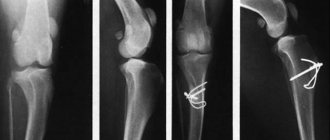Symptoms of the disease in a dog
No matter your dog's age, you play a key role in his fight against disease. The owner plays an important role in maintaining the health of the animal. Remember, your dog cannot tell you symptoms, but he can show you signs of illness. Being aware of the signs of the most common diseases is one way to help reduce your pet's risk of illness.
This is also necessary for early treatment of diseases. It's a little scary to think that at least 10% of pets that appear healthy to their owners and veterinarians during annual checkups have hidden illnesses.
Top 10 Signs Your Dog Is Sick
- Bad breath or drool (oral blood)
- Excessive drinking or urination
- Change in appetite associated with weight loss or abdominal enlargement
- Change in activity level (for example, lack of interest in games and walks)
- Stiffness or difficulty climbing stairs or walking
- Sleeping more than usual or other changes in your pet's behavior or reactions
- Coughing, sneezing, excessive shortness of breath or difficulty breathing
- Dry or itchy skin, sores, hairballs, scabs, or head shaking
- Frequent digestive disorders or changes in stool (constipation, diarrhea)
- Dry, red or cloudy eyes
Diagnosis/Treatment
Because signs of the disease are not always obvious, your veterinarian may recommend a preventive screening as part of your dog's annual physical. This is necessary for early diagnosis of hidden diseases.
Clinical examination often includes the following:
- Blood chemistry and electrolytes to evaluate internal organ health and ensure your dog is not dehydrated or suffering from an electrolyte imbalance.
- Tests to detect heart parasites (dirofilariasis), ticks or other contagious diseases.
- A complete blood test to rule out hematological, endocrine, and internal diseases.
- Urine tests to detect urinary tract infections and other diseases and evaluate the kidneys' ability to concentrate urine.
- A thyroid activity test to determine if the thyroid gland is not producing enough of the hormone thyroxine.
- An ECG to detect abnormal heart rhythms that may indicate an underlying heart condition.
- ECHO to detect cardiac disease in a dog.
- Radiography - for diagnosing various diseases in small domestic animals.
Competent diagnosis is the key to proper treatment of diseases in small pets.
Additional tests can be added on an individual basis. Your veterinarian will recommend the right course for your pet.
Headache symptoms
You may recognize some symptoms of headaches from your own experience with this unpleasant illness, such as a desire to be alone or worries. Of course, they are not all-inclusive as headaches can manifest in different ways and in a number of areas around the skull. However, most professionals agree that headache symptoms in dogs likely include :
- Sensitivity to light . Sensitivity to light is often a clear sign of headaches in dogs unless any eye problems have been ruled out.
- The dog wants to be alone . Avoid dogs from both owners and strangers as your pet will likely want some alone time as they are in pain and stressed. This is a common symptom of any pain, so it can easily be classified as a headache when there is no apparent physical reason for this behavior.
- Anxiety . This manifests itself in their behavior, such as walking, drooling, or hiding. If this happens when your dog has no reason to act anxious, it may be due to an unseen problem, such as a headache.
- Frequent sleep . This is an effective method for dogs that are in pain, as they will often try to "wait out" the painful period by sleeping off the pain. If you notice that your dog is napping more often even though his mental and physical stimulation remains the same, this may be a sign that your dog is suffering from headaches.
- Lack of interest in food . As you can imagine, a dog that is in pain is unlikely to be interested in food. This may be especially true during headaches, as the pressure caused by chewing, as well as the sounds and vibrations caused by chewing around the skull, can increase the pain.
- Walks with his head down . This may be your dog's way of reducing distress, but this position is often a sign of severe pain. This could be a sign of pressure in the neck, which is not too different from our own stress headaches, which occur at the base of the skull.
As you can probably tell, these symptoms can clearly indicate that something is wrong with your puppy, but there is no way to know that they are directly related to the headaches unless everything else has been addressed first. Since many of these symptoms are associated with more serious problems, it is vital that you take your dog to the vet if you notice any of them, especially if they occur more regularly.
© shutterstock
Prevention
Preventive screening not only helps detect disease in its early stages, when your dog's body is most responsive to treatment, but also helps avoid significant treatment costs. Early diagnosis also reduces the risk to your dog's health
if the disease is not detected. Additionally, by establishing normal baseline laboratory values for your pet during a health assessment, the veterinarian and you will be able to more easily recognize that something is wrong with your pet. Annual screening is the best preventative veterinary medicine!
For more information about preventive testing, contact your veterinarian. Your veterinarian is the best resource for information about your dog's health and well-being.
There are other signs of disease in dogs.
You can learn more about these diseases on our website.
If you have any questions or concerns, you should always visit or call your veterinarian.
Is the dog healthy? How to determine.
In this article I will touch upon general issues of dog health, and especially such an aspect of the dog-owner relationship as attention and care for your dog. Remember, with her appearance in the house, a great responsibility falls on you.
Firstly, the condition of your dog depends on the conditions that you were able to create for it.
Secondly, and this is the most important thing, from your attention to her. If you spend a lot of time with her, play, watch, you will easily notice changes that may signal a disease. Consequently, you will be able to take action and contact doctors in a timely manner, for example, to a reliable and trusted veterinary clinic. The dog itself will not complain and will not call the doctor, so everything depends on you.
Therefore, look after your pet, get to know him, spend more time with him!
So, how can you identify the signs that distinguish a healthy dog from a sick one?
First the common knowledge. A healthy dog's eyes are clean, its coat is shiny, the dog is active and cheerful (age naturally plays a role). The nose is cold and wet (but rely on this only), exceptions are if the weather is hot and the dog has been moving a lot or has recently woken up. Also, a healthy animal breathes smoothly, has a good appetite, and goes to the toilet regularly.
Now let's take a closer look at the signs that you need to pay special attention to.
Temperature. Usually, owners focus on the dog’s nose, but in case of any suspicion of illness, it is necessary to measure the temperature. The norm is a temperature from 38 to 39.2 degrees Celsius. Recommendations for the procedure - lubricate the tip of the thermometer with Vaseline or moisturizer, insert it carefully, sudden movements can injure the dog. Also, do not allow the dog to move suddenly and especially sit down. Be sure to disinfect the thermometer!
Activity. If a normally active dog behaves sluggishly, tries to hide in a dark place, or there are other sharply different differences in behavior than usual, then there are clear signs of poor health. A sharp increase in activity is also a sign worth paying attention to.
Breath. Changes in breathing rate are an important sign of many diseases. How to measure it? You need to know the usual frequency and, for comparison, measure it at the moment of suspicion of a health problem. To do this, you need to count the number of inhalations and exits over a period of time (usually a minute is used). You can count breaths by visible signs - for example, by the movement of the dog's chest.
On average, 10-20 inhalations and exhalations per minute are considered normal. Naturally, a dog breathes more often during physical activity, in the heat, etc.
Heartbeat. A rapid heartbeat can tell us that a dog is in pain or has a fever. It may also become more frequent with some cardiac diseases.
Drink. You need to have an idea of how much water your dog usually drinks, as increased thirst can signal illnesses, such as kidney problems.
Urination. Too frequent or unusually infrequent urination also tells us about health problems. Normal urine is light yellow, clear, and does not contain blood or strange particles.
Appetite. Both increased and decreased appetite can be signs of illness. At the very least, having discovered this, you should carefully observe your pet. Suddenly developing strange eating habits (perverted appetite), such as trying to eat one's own excrement, are also a sign of the disease.
Sudden weight loss. Sudden weight loss is 90% likely a sign of illness.
Oral cavity. The condition of the oral cavity can also reveal some diseases. The normal color of gums is pink, but red color indicates disease. Also, a symptom of many diseases can be bad breath (diseases of teeth, gums, etc.).
Signs of digestive problems. If your dog has diarrhea, vomiting, and the vomiting continues for more than 1 day or diarrhea for more than 2 days, you should contact your veterinarian. It is also necessary to show the animal to a doctor if the stool is black and/or contains mucus or blood.
Abdominal enlargement. A noticeable increase in the abdomen can either serve as a symptom of a number of diseases, or tell us about the dog’s pregnancy or banal obesity.
Cough, sneezing. Just like in humans, coughing and sneezing are symptoms of a range of illnesses.
Wool. If the coat is dull, disheveled, or the dog has scratching and/or baldness, you should consult a doctor.
Painful sensations. If a dog experiences pain during normal daily activities, then this is an undoubted and very serious sign of a disease.
But how can you figure out what and where your dog is hurting?
I remembered an old joke: “A veterinarian comes to the doctor’s clinic.
Doctor: “Well, what hurts you?”
Veterinarian: “Eh, anyone can do that.”
Here are a few signs that will help you determine if your dog is in pain:
Paws. The dog usually lifts the painful paw, tries not to lower it to the ground, or drags it along the ground. Or there is lameness.
Spine. Spinal pain can be expressed as trembling while standing still, staggering, or lowering the body back. It is difficult for the dog to “sit” correctly to defecate. Also, pain in the spine can cause lameness and an aggressive reaction (or simply displeasure) to touch.
Head. The dog half closes its eyes, presses its head against improvised objects, furniture, and towards you. Also, with a headache, the dog may shake its head and have a “sleepy”, indifferent look.
Eyes. It is noticeable that the eyes or the area near them bothers the dog. She tries to touch and scratch this area.
Ear. The dog may lower the affected ear and shake its head.
Oral cavity. Pain in the mouth can cause excessive salivation and yawning. There is also a lack of appetite.
Throat. When a dog has a sore throat, it is difficult for him to swallow and he tries to scratch the throat area.
Belly. The dog lies a lot, curled up, and loses activity. Tries to examine and lick or bite the sore spot. “Hump over” when standing.
Anal glands. Pain in the anal area is often expressed as “in
Nosological forms of dog diseases and other problems with their health
- Why the dog can’t see (reasons, diagnosis, treatment). What to do? When should you take it to the vet?
- Why does a dog urinate? Causes of frequent urination? Urinating in the wrong place. What to do if your dog urinates frequently?
- Why does a dog hiccup after eating? Physiology or pathology. What to do about dog hiccups?
- Why doesn't the dog sleep? Sleep problems in dogs. Diagnosis, causes and treatment
- Why do dogs eat grass (wheat grass or sedge)? A dog may eat a lot of grass to stimulate vomiting.
- Why is the dog swollen? General or local local swelling (muzzle, paws, mammary glands, eyes, nose, ear, nipples, testes). What to do, how to figure it out?
- Why doesn't the dog drink water? Doesn't want to drink, can't drink (reasons, diagnosis, treatment)
- Why does my dog cough like he's choking? Causes, diagnosis and treatment for coughing in dogs
- Why does a dog eat his own or someone else's feces? Cause and effect, what this can lead to. Correcting Excessive Fecal Eating in Puppies
- Why does my dog often tremble? Distribution of this symptom, list of diseases, tactics of diagnosis, treatment and prevention
- Why does a dog stick its tongue out of its mouth in extreme heat? The main causes, diagnosis, treatment, correction are given. What to do?
- Why does a dog have a hot head, body, ears, tongue and paws? Manifestation of a general or local increase in body temperature. Diagnosis and treatment
- Why does a dog howl on the street, at home, on a chain, day and night? Diagnosis and treatment of dog health problems accompanied by howling
- Why does a dog eat earth, sand, stones? Causes, diagnosis, treatment, prevention. Eating soil at home and while walking in dogs
- Why does a dog smell strongly of dog, rot, fish, rotten meat? Change in odor of skin, urine. Reasons for diagnosing and correcting bad odor from a dog
- Rapid breathing in dogs (causes, pathogenesis, symptoms and signs, diagnosis, treatment and prevention). What to do if your pet has increased breathing? What types of breathing problems do dogs have?
- Why does my dog often vomit yellow or white foam? Distribution, causes, diagnosis and treatment of vomiting in dogs
- Why doesn't the dog eat anything? Causes, aspects of diagnosis, treatment and prevention. What to do if your dog won't eat food or food?
- Why does a dog scratch its ears and shake its head (reasons, range of diseases, diagnosis, treatment and prevention). Why does my dog constantly shake his ears?
- What is the reason why a dog constantly whines? How to solve this problem? When should you contact a veterinarian?
- Why is my dog breathing heavily and frequently? Physiology and pathophysiology of respiratory function in animals. First aid for a dog with difficulty breathing
- Why does a dog eat cat feces? The problem is serious and urgent. Find out how to correct this bad habit
- Why does a dog drink a lot of water? The main causes of thirst in dogs and tactics for animal owners. What should you do if your older dog starts drinking a lot of water?
- Discharge from the eyes in dogs (causes, pathogenesis, diagnosis, treatment, prevention). Why do my dog's eyes water or have discharge?
- Why does a young dog have bad breath? Have you considered the main causes of unpleasant mouth odor in dogs? An elderly dog has bad breath, what should I do?
- Why can a dog lose hair in patches or all over its body? What is the reason? What to do? How to treat hair problems in dogs?
- Why does my dog have diarrhea? Dog diarrhea (causes, pathogenesis, diagnosis, signs and symptoms, first aid, treatment and prevention)
- How to treat bartonellosis in dogs? Bartonella is a causative agent of septic processes in animals and humans. How to make a correct diagnosis? Symptoms of Bartonella in dogs, treatment, prevention and vaccination of Bartonella infection in dogs
- Canine bordetelosis (epizootology, distribution, pathogenesis, symptoms and signs, treatment and prevention). Bordetella in dogs (Bordetella bronchiseptica)
- How to treat adenovirus in dogs? How to make a correct diagnosis? Symptoms, treatment, prevention and vaccination for adenovirus infection in dogs
- Why is the dog lethargic and constantly lying down? Oppression of dogs (causes, pathogenesis, diagnosis, treatment). When should you seek veterinary help?
- Acute and chronic hepatitis in dogs (etiology, pathogenesis, diagnosis, symptoms and signs, treatment and prevention). Infectious and toxic hepatitis of dogs
- Rabies in dogs (causes, diagnosis, signs and symptoms, treatment, prevention, vaccinations and vaccinations)
- Rabies in humans and animals (distribution, symptoms, diagnosis, treatment and prevention). Rabies. Early vaccination after bites makes it possible for people and animals to survive and prevent them from dying from rabies
- Respiratory adenovirus type 2 in dogs: (etiology, symptoms, causes and treatment). Adenoviral infection of animals type 2
- What can lead to self-treatment of piroplasmosis in dogs at home?
- 7 Causes of Heart Failure in Dogs
- Canine endocardiosis
- Canine infective endocarditis
- Prevalence of cardiovascular diseases in dogs
- Enteropathy in dogs
- Pulmonary stenosis in dogs
- Gastritis in dogs
- Canine leishmaniasis
- Allergic bronchitis in dogs
- Canine left atrium rupture
- Chemodectoma in dogs
- Piroplasmosis in dogs (symptoms, incubation period, treatment)
^Top
How to understand that your dog is sick
How can you tell if your dog is sick? How to distinguish the onset of a serious illness from simple malaise or overwork?
The main rule is no panic. A single case of vomiting, an upset stomach or a hot nose of a dog does not always serve as a reason to sound all the bells. For immediate emergencies that require immediate help for your pet, a caring dog owner simply needs to pack a first aid kit and have it on hand.
The difficulty is that dogs cannot tell us where and what hurts them. Some have strong endurance, do not whine or complain about anything, and it is quite difficult to understand the condition of such a dog. But you can, if you wish. Write down or remember the identified bad symptoms before going to the veterinary clinic. Based on individual symptoms, it will be easier for the doctor to establish a diagnosis and prescribe the correct diagnosis and treatment.
What does a dog in good health look like?
Dogs that are in good health have an excellent appetite, are active, cheerful and mobile. The coat is shiny, shedding is moderate 2 times a year. The nose is cool and wet, but not always. During sleep, immediately after the dog wakes up, after an active walk, in the heat, it may be dry and warm, and this symptom is not a cause for concern. The mucous membrane around the eyes should be pale pink with moderate moisture.
One of the main indicators of health are three: body temperature, pulse and breathing rate.
Normally, dogs have a body temperature of 37.5-39.4°. In miniature dog breeds it is slightly higher than in large dogs. To determine what temperature will be considered normal for your dog, you need to measure it when he is in a relaxed state.
The normal pulsation is from seventy to one hundred and sixty beats per minute. In small dogs and puppies the heart rate can reach 180-220 beats per minute; in large and giant breeds the heartbeat is slow. You can feel the pulse on the left side of the chest under the dog's elbow, or on the inner surface of the thigh, where the main cardiac artery passes. It is enough to count your pulse for 20 seconds and multiply the result by three.
Respiration rate is also an important indicator. Normally, it is from twelve to twenty-five respiratory movements per minute. In puppies and small dogs, breathing rates may exceed these values. Respiratory activity can be determined by the rise and fall of the chest or contraction of the abdomen when the dog sleeps.
All three of these indicators must be determined in your dog in a healthy state and recorded. In order to compare how much the indicators differ from the norm in case of the onset of the disease. I move on to the second part of my story.
How can you tell if your dog is sick?
Appearance. Of course, a sick dog differs in appearance and behavior from a healthy one. She becomes lethargic and apathetic, may hide in dark corners, lose her appetite, suddenly lose consciousness, and whine. Or, on the contrary, she becomes too excited, coordination of movements is disturbed, pupils float, sleep and rest periods are disturbed.
Coat. The dog's coat may become dull, faded, heavy shedding out of season, yellowness of the skin should be alarming.
Eyes, mouth and nose. Purulent discharge from the eyes, nose, unpleasant odor from the mouth, dry nose, skin on the nose with cracks, all this is a reason to worry. Pale, abundant discharge may indicate anemia, icteric discharge may indicate liver damage, piroplasmosis, leptospirosis, with blood clots - indicate serious infections or poisoning, bluish discharge - indicate abnormalities in the blood or heart system.
Problems in the gastrointestinal tract. Stomach upset, vomiting, constipation that does not stop for more than one day, bloating and overflow in the abdomen can indicate serious disorders in the gastrointestinal tract. Stool with blood or almost black stool is especially dangerous; internal bleeding is possible. Also pay attention to increased drooling from the mouth (if the breed was not slobbering at all before), to increased insatiable thirst (in the heat, dogs drink more water and this is normal).
Genitourinary system. Urinary incontinence or frequent urination, color change (normal yellow without impurities), pain in the back, hunching. Also, a sickly sweet odor from the mouth indicates kidney problems. Purulent discharge from the loop in females and the genitals in males may indicate the onset of inflammation.
Breath. It becomes very frequent or, on the contrary, rare. Wheezing, hoarse cough, difficulty breathing, loss of consciousness, cyanosis of the mucous membranes and tongue, these symptoms may indicate problems with the dog’s lungs or heart.
Dog pose. In its normal state, the dog rests or naps in an upright and relaxed posture, with its limbs extended and straightened. When some organ hurts, she takes a forced position in order to minimize pain and stress. So, for example, with diseases of the lungs and heart, a dog can stand for a long time, with its paws spread wide and leaning against a support, so it is easier for it to breathe. And with kidney disease, lameness in the hind leg may begin, localized in the left or right limb.
All of the above signs of dog malaise vary to varying degrees. In aggregate or individually, but if something worries you about your beloved pet, this is a reason to seek qualified help. Veterinarian consultation can now be obtained either in person or by telephone. Perhaps your case is not dangerous, and everything will be done with a phone call.
Don’t let your dog go, because it suffers and suffers from diseases just like we humans do. Be healthy, love and take care of your pets!
All the best, see you again friends! If the post was useful to you, please share it on your social network. Click on the buttons below the article. You don't care, but I'm pleased. Sincerely, blog author Marina.











